-
Testing the system on a Rock 5B
03/01/2023 at 08:26 • 0 commentsAfter taking delivery of a Rock 5B with 8 Gb RAM, I took the opportunity to check and update all the processes necessary to install the software necessary to run this device. Many of the previous bugs, such as ALSA not being able to record at high frequencies, have now been fixed by those people themselves. The only real problem I had was that the Rock 5B would not boot up on the first, or even the second try and had to be re-powered up several times.
Once the software was all successfully installed, the GUI was used to set the system to graphical display, which displays a bar chart, and on pressing 'Start', everything worked pretty much as expected. What was not expected, was the high quality of the recording, with none of the usual aberrations found with the other devices used. This is a massive advantage and well worth the extra expense of the Rock 5B. Also, the 8 Gb of RAM allows many more species to be detected if I had the audio data and there's even a 16 Gb variant available.
The instructions here and GitHub repo have been updated.
-
Finally Seventh Bat Species Detected!
10/19/2020 at 07:33 • 0 commentsThe Lesser Horseshoe Bat is a tiny creature the size of a plum and is quite rare in the UK. Using this equipment, I have detected it in other areas close by but never before outside my home. This is October 19th and, being in the middle of the bat mating season, it's probably because they are venturing further afield looking for a bit of romance.
![]()
-
Clean Spectograms on Mains Power
10/15/2020 at 08:31 • 0 comments![]()
Slight interference band at 96K, but otherwise clean on new mains power adapter. Phew - expensive but money well spent!
-
Medical grade power supply
10/13/2020 at 12:55 • 0 comments![]()
Probably not the most exciting log in this project, but trying to run the wildlife detector off the mains power has proved tricky due to poor quality switching adapter power supplies for the Jetson Nano. Eventually went for the most expensive medical grade one I could find. The Stontronics T6380ST. And now there is very minimal interference on the audio recordings :)
-
More Enquiries from Welsh Government and Secret Website revealed
09/30/2020 at 18:16 • 1 commentAfter posting the fact that this project was short-listed for the Hackaday Prize on social media, it has suddenly attracted a lot of attention from my country's government. Not one, but two separate gov. agencies have now been in contact with a view to commercialisation. Telephone meeting went well today, despite me being thrown off somebody's farmyard drive, mid conversation, with the classic UK line: "Get Off My Land". Hilarious!
It's also time to unveil our secret website and the actual name of the product: http://narwhal-ai.org/
![]()
-
Secret Project Partner Now Revealed - Hydrophone development
09/24/2020 at 19:38 • 0 commentsI want to mention Ivano Pelicella of Dodotronics who has helped develop this project in secret over the last few months by supplying components etc. such as the Nvidia Jetson Nano. Ivano is a specialist microphone developer in Italy and the project currently uses his Ultramic-384k-ble USB mic. Obviously, to monitor aquatic mammals, a waterproof mic is required and Ivano is developing this very thing, literally, as we speak. Here are the moulds for the prototype:
![]()
Hydrophones are extremely hard to find / expensive, but essential to this project for the future.
-
Commercialisation of this Project is Approaching
09/24/2020 at 18:11 • 0 comments![]()
Just come back from a meeting with some local UK Welsh Government agents who have contacted me via social media. They are very keen to get local tech businesses up and running in the local economy and have made strong indications that this Wildlife Detector will be supported. The plan is primarily to deploy the device on local rivers as part of their Menai Rivers Project to monitor the rodent and otter population and then take it out to sea and monitor aquatic mammals in conjunction with a massive tidal energy project.
-
The Official Hackaday Prize Video
09/16/2020 at 07:06 • 0 commentsSince this project is now one of the 34 finalists, I thought I should produce a video update on the project. Nothing much has changed with the hardware over the last couple of months but I have done quite a few re-training sessions with the addition of new data to improve accuracy. I have used the detector every night, weather permitting, for last 6 months or so and the results can be seen live on this web page: LIIVE FEED between about 19:00 and 08:00 hours local time. I am in the UK and my time zone is BST or GMT or somewhere near 0 (it changes in October!)
It's actually very satisfying to have a project at some kind of 'finished' stage although it would be really great to have a custom PCB built for the power supply with some kind of scheduling chip on it so that the Nano / RPi 4 can be fired up at a pre-determined time of day and then shut off again later, thus saving battery power.
Talking about power, it's astonishing that there is no 'consumer' solution for providing adequate battery orientated 5V power for these power hungry devices. At the time of building the system, there was no plug and play shield available for the high currents required and nothing for taking power from a lead acid battery at charging voltages of, for example, 15 volts. -
Thumbs up from Jensen Huang CEO of Nvidia !
09/15/2020 at 07:40 • 0 comments![]()
Just heard that Jensen Huang has chosen to feature this project in his keynote speech at Nvidia's GPU Technology Conference (GTC) on October 5th 2020. Jensen is the top Honcho of Nvidia who most of us have never heard of before - the Elon Musk of SpaceX. So, for anybody developing Ai projects like myself, this is totally awesome!
Somebody recently suggested that he might want to send it off into outer space to detect species of Aliens. I never thought of that, but sounds like a great idea!
-
Web Page for Live Updates
03/31/2020 at 13:12 • 0 comments![]() Most evenings, currently at about 20.00 UTC, this gadget will be deployed in the wild for rigorous testing and debugging. The barchart updates itself every 3 minutes or so and it's quite fun to see the animals appear during the evening / night.
Most evenings, currently at about 20.00 UTC, this gadget will be deployed in the wild for rigorous testing and debugging. The barchart updates itself every 3 minutes or so and it's quite fun to see the animals appear during the evening / night.
http://www.goatindustries.co.uk/bat_detector/showdata.php
AI Wildlife Species Bat Detector
Species are auto detected 'in the wild' using machine learning with results transmitted to the cloud
 Capt. Flatus O'Flaherty ☠
Capt. Flatus O'Flaherty ☠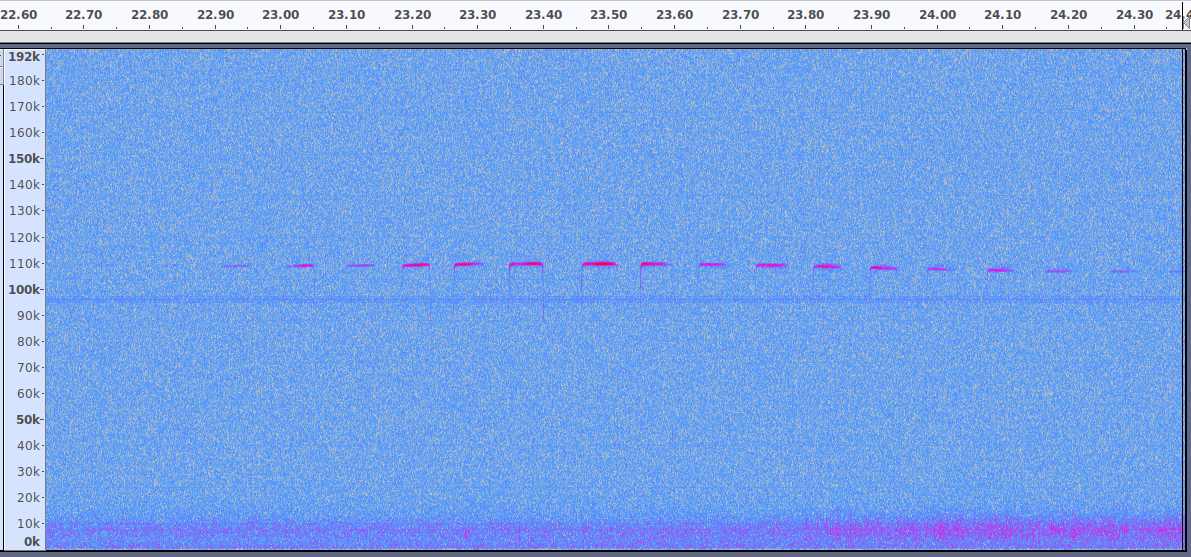
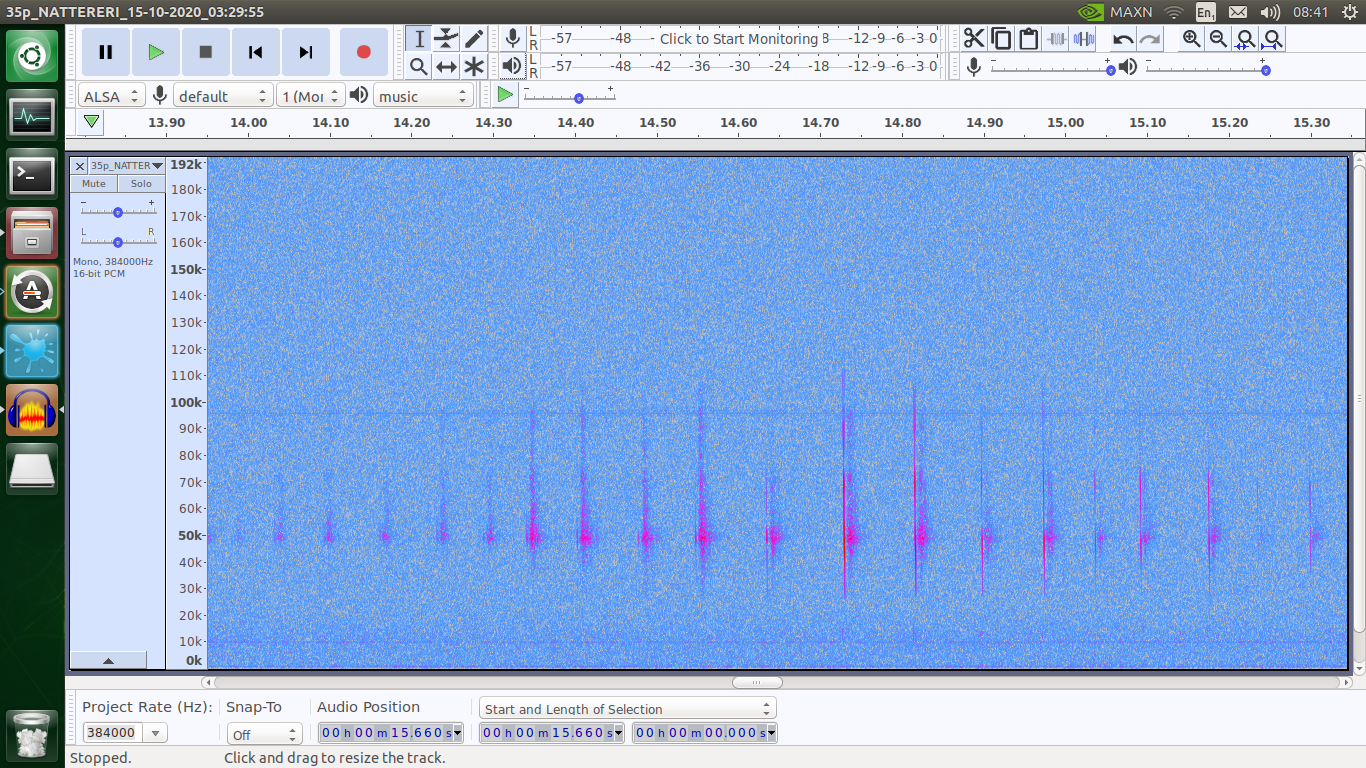
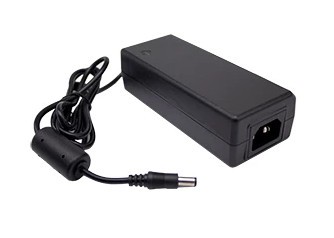
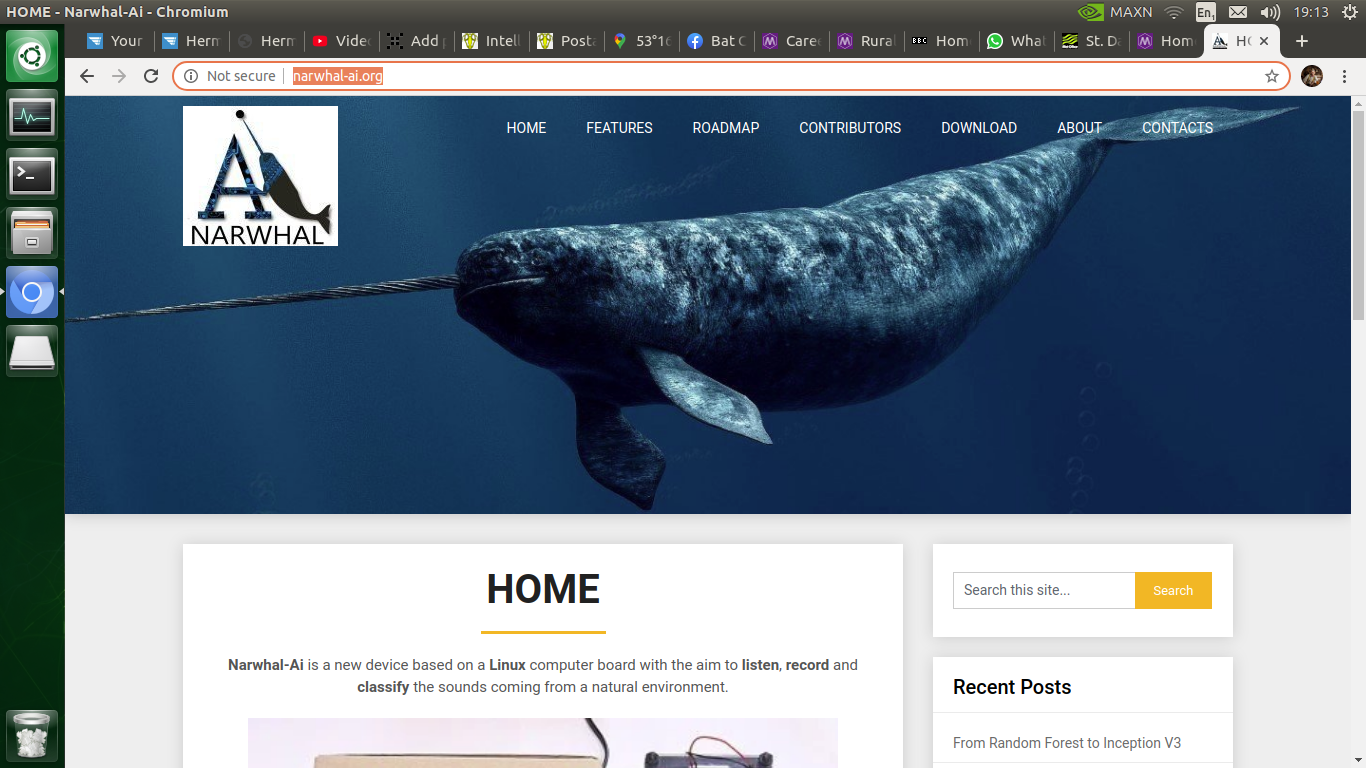
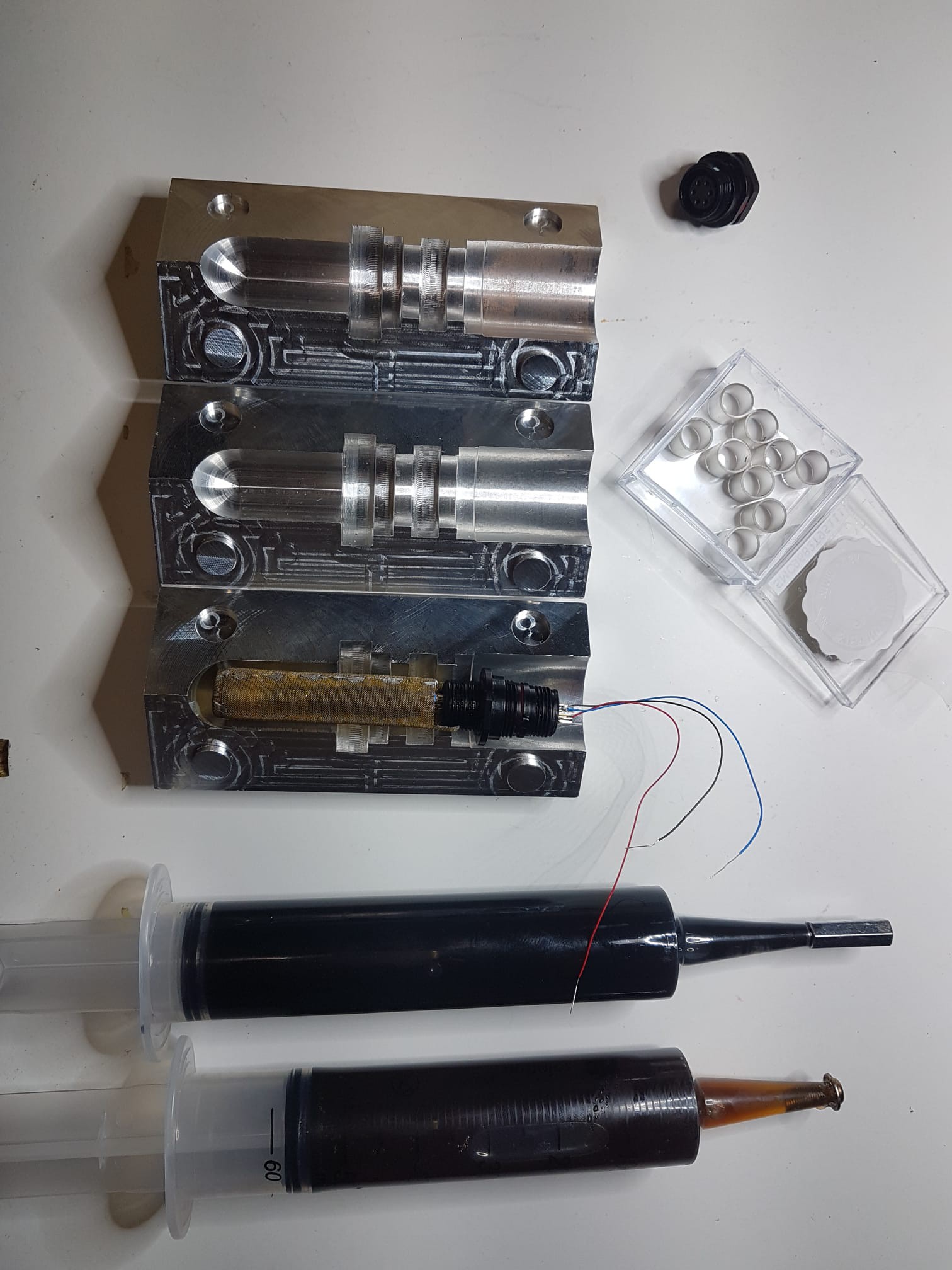


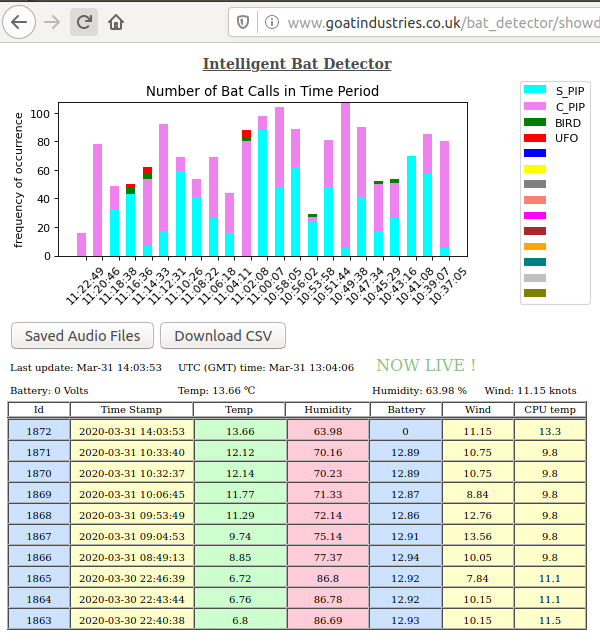 Most evenings, currently at about 20.00 UTC, this gadget will be deployed in the wild for rigorous testing and debugging. The barchart updates itself every 3 minutes or so and it's quite fun to see the animals appear during the evening / night.
Most evenings, currently at about 20.00 UTC, this gadget will be deployed in the wild for rigorous testing and debugging. The barchart updates itself every 3 minutes or so and it's quite fun to see the animals appear during the evening / night.